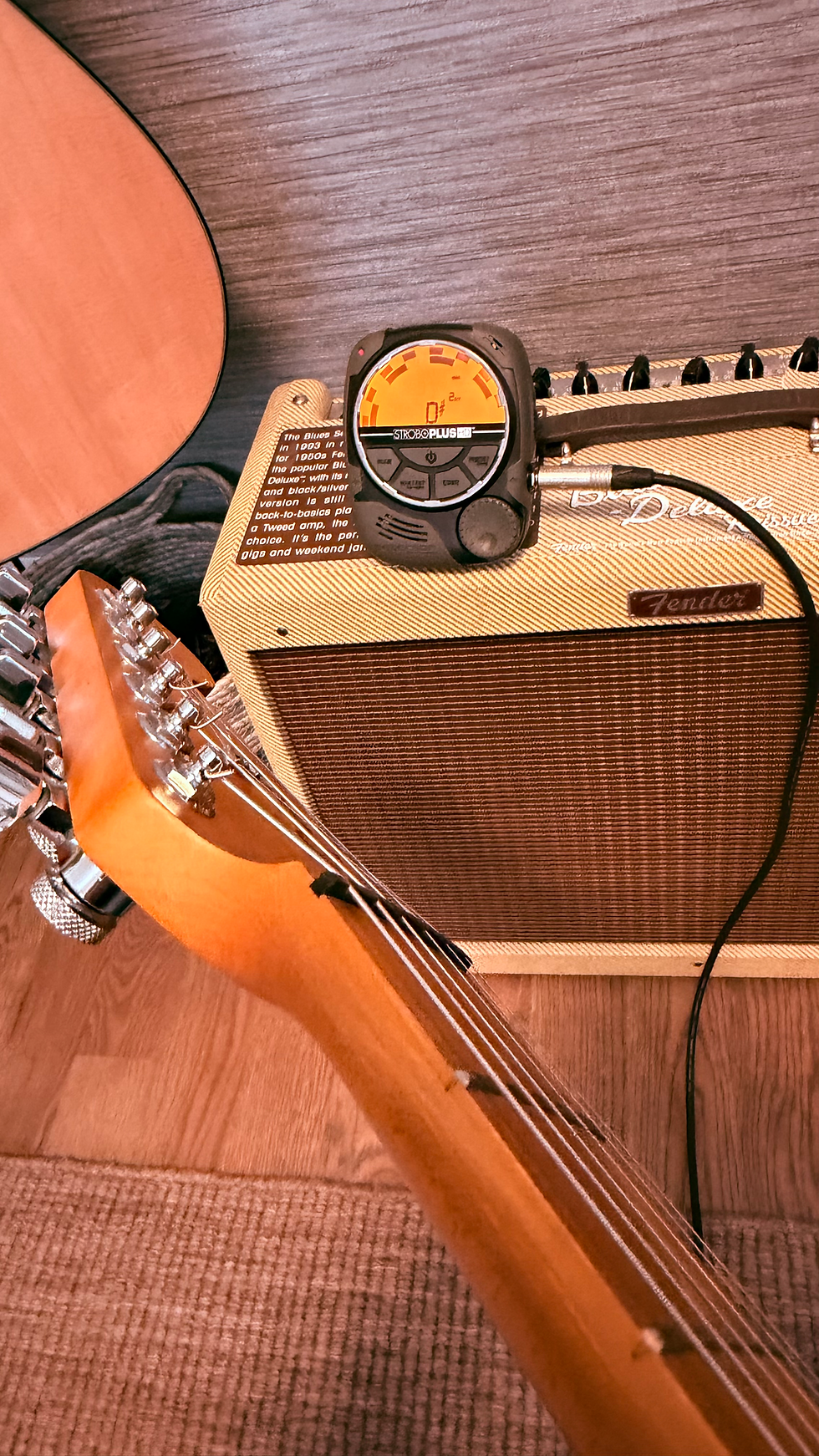The Magic of Open Tunings
- Joe Squillacioti
- Nov 4
- 2 min read
Updated: 7 days ago
Ever strum a chord and feel like the whole room started vibrating with you? That’s the beauty of open tunings—they turn your guitar into a cathedral of sound.
If you’ve ever wondered why songs like She Talks to Angels (Black Crowes), Rain Song (Led Zeppelin), or Brown Sugar (Rolling Stones) sound so lush and resonant, it’s because they were built on open tunings.
So, what’s the deal? Why do guitarists twist their tuning pegs into such strange configurations? Its an inspiration!
1. Open Strings = Open Sound
In standard tuning, you play a chord by pressing down several strings. In an open tuning, you can strum all six open strings and—boom—you’ve already got a chord. For example, Open G (D-G-D-G-B-D) forms a G major when you play it open. No fingers needed, just glorious resonance.
That means every chord you build rings with more open strings, more harmonics, and a sound that feels alive. It’s like the difference between talking and singing in a cathedral.
Keith Richards once joked that open G tuning “plays itself.” He even took the low E string off his guitar completely. (Because, of course, he did. He’s Keith Richards.)
2. Fresh Inspiration
Sometimes, you hit a wall. Same shapes, same progressions, same licks. Open tunings force your hands and ears to think differently. Suddenly, the shapes you’ve known for years sound brand new.
Jimmy Page said open tunings helped him “write songs that didn’t exist before.” It’s true. Once you twist those tuners, muscle memory flies out the window and creativity sneaks in through the door. The story goes that George Harrison told Jimmy that he never writes Acoustic Songs. So Jimmy tuned his acoustic to a modified DADGAD, a GModal Tuning (DGCGCD) and wrote The Rain Song.

3. Mood & Emotion
Different tunings carry different emotions. Open D feels wide and open, perfect for melancholy ballads. Open G has swagger—bluesy and confident. DADGAD? Mysterious and moody.
Each tuning has its own personality. You’re not just changing notes; you’re changing atmosphere.
4. Famous Examples
Keith Richards – “Brown Sugar,” “Start Me Up” (Open G)
Joni Mitchell – dozens of tunings (seriously, she needed a filing system)
Jimmy Page – “Rain Song” (G-Sus4)
Robert Johnson – early Delta blues in Open G and Open D
So, next time you feel stuck or uninspired, twist those tuning pegs and see what happens.
Will you get lost? Probably. But you’ll get lost in the best possible way.
And if someone asks why your guitar sounds so different, just smile and say, “Oh, it’s a secret tuning.” Then enjoy watching them wonder.










Comments